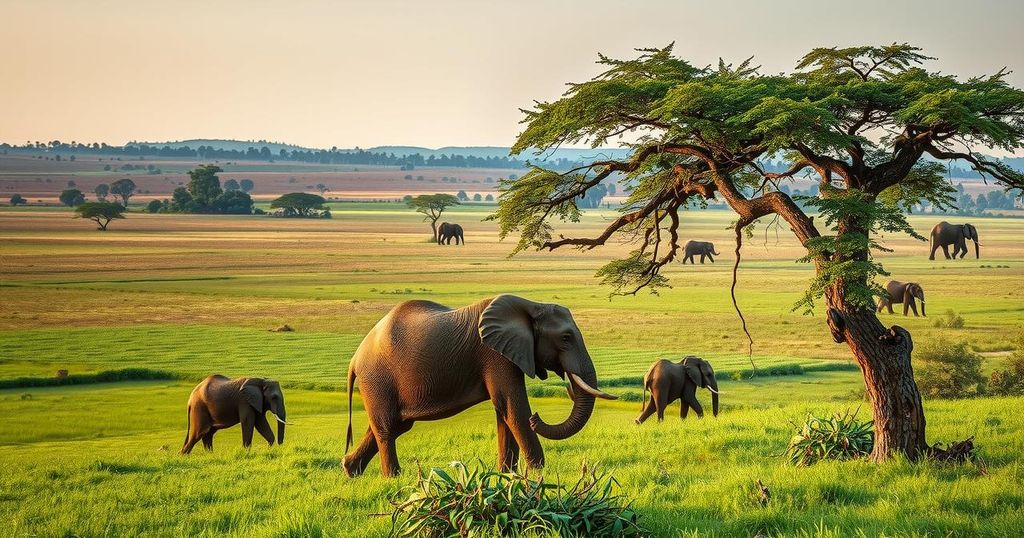The article discusses the escalating human-elephant conflict in Kenya, primarily due to drought and habitat loss. Conservation leaders highlight the need for innovative solutions and education to foster coexistence. Initiatives like beehive fences are presented as effective methods for protecting crops while preserving elephant populations.
In Kenya, increasing human-elephant conflicts have emerged as a significant issue, particularly aggravated by drought and resource depletion. Elephants have begun encroaching upon villages and agricultural lands in search of food and water. Conservation groups point out that this conflict, exacerbated by a growing human population and climate change, has now surpassed poaching as the primary cause of illegal elephant deaths in the nation.
Edwin Lusichi, the head keeper at the Sheldrick Wildlife Trust’s nursery, shared a poignant story of a young elephant, Pardamat, who was discovered beside his deceased mother, a victim of human violence. This tragic narrative is common among elephants in Kenya, leading to their increased vulnerabilities.
As elephants raid crops, desperate farmers often retaliate, resulting in further strife. Lusichi noted, “The shopping malls, the roads, have been built on lands that used to belong to elephants and their migration routes.” Thus, as habitats shrink, human-elephant encounters are inevitable.
This dilemma is intensified by the rise of new commercial farms cultivating high-demand crops like avocados. Conflicts between humans and elephants are not only destructive but also pose risks to human safety, as evidenced by the many injuries and fatalities reported each year.
To mitigate this problem, rangers, particularly in southern Kenya, patrol farmlands nightly. Daniel Kutata of the Big Life Foundation stated, “On a busy night, on a dry season, even 20 elephants can come and raid,” highlighting the pressures faced by farmers whose livelihoods depend on their crops.
To aid in coexistence, organizations such as Big Life have implemented electric fencing to protect farmlands. However, some elephants have adapted to bypass these barriers. For instance, a Maasai farmer shared how raiding elephants destroyed his crops, resulting in a severe financial loss.
Organizations like Save the Elephants are actively collaborating with farmers to devise innovative solutions. Farmer Jonas Makima expressed the dire situations faced during crop season, where he battles nightly incursions of elephants, leading him to utilize various deterrents to safeguard his produce.
Among these, the beehive fence has proven especially effective, deterring elephants by taking advantage of their fear of bees. As Kenya’s population doubles, the need for peaceful coexistence becomes paramount. Education and understanding are vital, as emphasized by Lusichi, who insists that both farmers and elephants deserve space and rights to their habitats.
The ongoing conflict between humans and elephants in Kenya primarily stems from dwindling resources and habitat encroachment exacerbated by climate change and population growth. Conservation efforts are crucial, emphasizing innovative solutions and cooperative approaches for farmers and wildlife. Organizations are providing education on coexistence and strategies such as beehive fences to mitigate crop loss while ensuring the protection of elephants, thereby fostering sustainable living for both parties involved.
Original Source: abcnews.go.com






